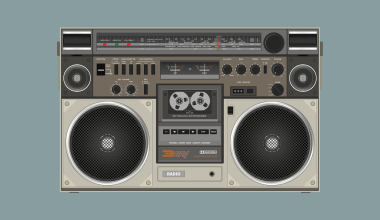Vocal recording is the cornerstone of great music production. Whether you’re a professional artist, podcaster, or just starting your musical journey, capturing high-quality vocals can elevate your sound and bring your creativity to life. This guide will provide you with everything you need to know about vocal recording, from choosing the right equipment to mastering post-production techniques.
Why Vocal Recording Matters
The quality of your vocal recording can make or break your track. A clean, well-balanced vocal brings emotion and connection, while poor recordings can distract from the artistry of your work. Vocal recording isn’t just about singing or speaking—it’s about telling a story, conveying a mood, and leaving an impact on your audience.
Choosing the Right Equipment for Vocal Recording
1. Microphones
Your microphone is the foundation of your vocal recording setup. Here are some popular types:
- Dynamic Microphones: Best for live performances and podcasting, as they handle high sound pressure levels and background noise.
- Condenser Microphones: Ideal for studio recording, these capture a broader frequency range and greater detail.
- Ribbon Microphones: Known for their warm and vintage sound, perfect for soulful vocal recordings.
Focus Tip: When choosing a microphone, test different options to find one that complements your voice’s tonal qualities.
2. Audio Interface
An audio interface connects your microphone to your computer and converts analog signals to digital. Popular choices include:
- Focusrite Scarlett Series
- Universal Audio Apollo
- PreSonus AudioBox
3. Pop Filter and Windscreen
A pop filter minimizes plosive sounds like “P” and “B,” ensuring cleaner recordings.
Setting Up Your Recording Space
Creating an ideal recording environment doesn’t require a professional studio. Here’s how you can optimize your space:
1. Choose a Quiet Location
Avoid areas with background noise. Consider recording at night or during quiet hours.
2. Acoustic Treatment
Use foam panels, bass traps, and diffusers to reduce echoes and unwanted reflections.
3. Isolation Booths
If your budget allows, invest in a vocal isolation booth or use DIY solutions like a closet lined with blankets.
Pre-Recording Preparation
1. Warm-Up Your Voice
Warm-ups improve vocal range, reduce strain, and enhance tone. Try humming, lip trills, and scale exercises.
2. Hydration
Drink water to keep your vocal cords lubricated. Avoid caffeine and alcohol before recording.
3. Test Levels
Check microphone placement and adjust input levels to avoid clipping. Aim for consistent volume without distortion.
Recording Techniques for Stunning Vocals
1. Microphone Placement
Experiment with distance and angle:
- Close Mic Recording: Offers intimate and detailed sound. Maintain a 6-12 inch distance.
- Off-Axis Recording: Reduces harshness for naturally bright voices.
2. Proper Posture
Stand or sit upright to allow better airflow and vocal projection.
3. Layering Vocals
Record multiple takes for harmonies, ad-libs, and background layers.
4. Use a Metronome or Backing Track
Stay in time with the beat or instrumental to ensure seamless integration into your project.
Essential Post-Production Steps
1. Editing
Remove unwanted noises, adjust timing, and cut unnecessary sections.
2. Equalization (EQ)
Enhance clarity by cutting muddy frequencies (100-300 Hz) and boosting presence (2-5 kHz).
3. Compression
Control dynamic range for a consistent volume throughout the track.
4. Reverb and Delay
Add depth and space to your vocals, but use effects sparingly to maintain clarity.
Tips for Selling Your Music on Beatport
If your vocal recordings are part of a track, consider selling your music on platforms like Beatport. Follow these tips to make your music stand out:
- Ensure your vocals are mixed and mastered to industry standards.
- Create a unique and catchy track title.
- Write a compelling description that highlights your track’s uniqueness.
Overcoming Common Vocal Recording Challenges
1. Dealing with Background Noise
Use noise gates or dynamic noise reduction tools during editing.
2. Pitch Issues
Use pitch correction software like Auto-Tune or Melodyne to fix minor off-notes.
3. Mic Popping and Sibilance
Use a de-esser to tame harsh “S” sounds and adjust microphone placement to avoid pops.
Advanced Vocal Recording Techniques
1. Parallel Compression
Blend a heavily compressed vocal with a dry track for a fuller sound.
2. Automation
Automate volume and effects to emphasize emotional moments in the vocal performance.
3. Harmonic Saturation
Add warmth and character to vocals using analog emulation plugins.
Tools and Software for Vocal Recording
- DAWs: Ableton Live, Logic Pro, Pro Tools, FL Studio
- Plugins: FabFilter Pro-Q, Waves Vocal Rider, iZotope Nectar
- Hardware: Preamp processors like Universal Audio LA-610
Conclusion
Vocal recording is an art and science that requires patience, practice, and the right tools. With the tips and techniques outlined in this guide, you’ll be well-equipped to produce stunning vocals that captivate your audience. Whether you’re a budding artist or seasoned professional, mastering the art of vocal recording will take your music production skills to the next level.
Related Articles:
For further reading, explore these related articles:
- Best Mic for Recording Vocals: Top Picks & Simple Buying Guide
- 5 Things You Should Do Before Going to a Recording Studio
- Top Mistakes Artists Make While Recording at Home and How to Avoid Them
For additional resources on music marketing and distribution, visit Deliver My Tune.






